Stan Garfield's Blog, page 9
August 2, 2024
Knowledge Management Thought Leader 80: John Girard

John Girard is a former professor, storyteller, consultant, author, and editor, and was at one point the Director of Knowledge Management at National Defense Headquarters in Canada.
He gave presentations about technology, leadership, and culture, and his research interests included knowledge management, social media, virtual business, innovation, and globalization. In his military career, John had experience as a leader, trainer, policy officer, human resource manager, and project manager in the public sector environment.
John was the Peyton Anderson Endowed Chair at Middle Georgia State University, and Professor of Management at Minot State University in North Dakota.

For more about John, see Profiles in Knowledge.
The Inukshuk: A Canadian Knowledge Management Model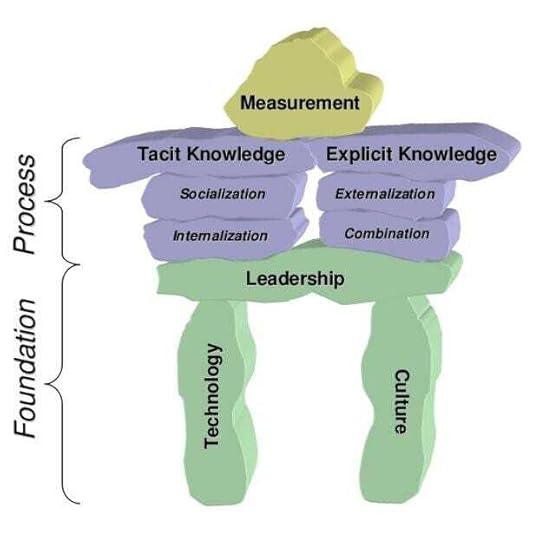
The Inukshuk, as shown above, is an excellent model of Canadian knowledge for a variety of reasons. First, Inuksuit are well-known symbols in Canada and play an important role in our history and tradition. Second, most Inuksuit resemble people, to remind us that it is people who play the most important role in knowledge management — knowledge management is simply not possible without people. Finally, while most Inuksuit are similar, they are nonetheless distinct from one another, much as each knowledge management implementation will be unique.
Books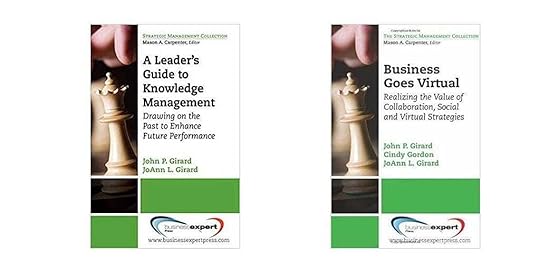


 Knowledge Management Definitions
Knowledge Management DefinitionsFor many years, I resisted offering a definition for knowledge management because whenever I included a definition in a talk this would become the main focus of attention. It seemed many people would zero in on a particular word or concept and often ignore the larger message of the talk. After years of sidestepping the question, JoAnn and I developed a general definition that we felt described the essence of KM. Recognizing that a single, non-segment specific, definition might not serve everyone’s needs, we often recommended “definition seekers” search the web.
To simplify this search process, we have gathered a collection of more than 100 KM definitions. We have very deliberately provided a broad selection of KM definitions: some are from academics, while others are from practitioners, some are from the government, others from the for-profit sector, and still others are from the not for profits. We also tried to include definitions from a variety of counties.
A frequency analysis of the 100 definitions determined the most common words appearing in KM definitions were: knowledge, organization, process, information, use, share, create, and manage. Based on this review, we propose the following definition:
Knowledge Management is the process of creating, sharing, using and managing the knowledge and information of an organization.
Without a doubt, people will question some of the definitions. We welcome the debate that will almost certainly follow.
Knowledge Sharing as an Enabler of Virtual BusinessThe omnipresent connection that is becoming commonplace in the 21st Century provides an
opportunity for business leaders to create value in ways that simply were not possible only a decade ago. Today we are witnessing tremendous growth in virtual businesses, most of which are applying one of four key strategies. The “any place, any time” strategy focuses on providing high quality service 24/7 by ignoring traditional geographic challenges. The “people know best” strategy harnesses the power of everyday people to create value. The “everyone has a stake” strategy considers the stakeholder view of the organization and guides leaders in tapping this vast store of wisdom. Finally, the “real in the virtual world” strategy offers incredible opportunity for real businesses to sell their wares in the virtual world.
The success of most virtual business is the result of four critical enablers coming together in the right balance: social technology, visionary leadership, collaboration culture, plus virtual worlds. This so-called TLC+V (technology, leadership, collaboration, and the virtual) of virtual business has suddenly combined to create exciting and uncharted business opportunities waiting to be harnessed. Some refer to this new discordant environment as “weapons of mass collaboration.” This new collaborative and more connected world is more adaptive, more agile, more fluid, more virtual, and finally, more collaborative and quite frankly more refreshing, fun, and inspiring.
[image error]July 26, 2024
Knowledge Management Thought Leader 79: David Garvin
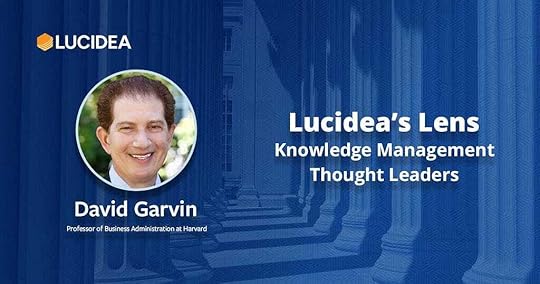
The late David Garvin (1952–2017) was the C. Roland Christensen Professor of Business Administration at Harvard Business School, and a thought leader on organizational learning.
He believed that enduring success requires building a strong culture of learning in an organization, to counter the unpredictability brought about by shifts in customer preferences, market downturns, and technological advances.
He argued that at the heart of organizational learning lies a set of processes that can be designed and deployed, while providing detailed examples of organizations that have successfully used learning to pursue improvement and change. David’s research interests included business and management processes, the principles of organizational learning, the design and leadership of large organizations, graduate management education, and case method pedagogy.

For more about David, see Profiles in Knowledge.
Books
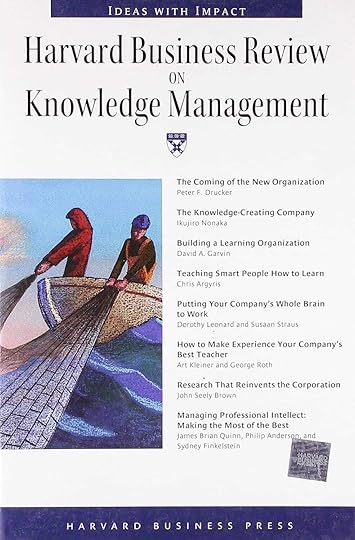
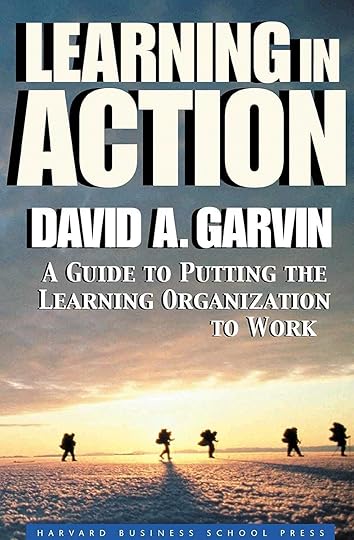 Learning in Action
Learning in ActionFrom organizational to individual learning
Without individuals who learn, there can be no learning organizations — they are, of course, essential for success. For executives, the first step in building a learning organization is a personal one. They need to develop these four skills as learners:
1. Openness to new perspectives
Openness requires that leaders accept the provisional nature of knowledge. Even long-established truths must eventually be revised and replaced. To remain current, they must continuously seek out competing concepts and evidence, wrestle with surprising and unfamiliar ideas, and consider new and unpopular points of view.
2. Awareness of personal biases
A second requirement for effective learning is an awareness of one’s personal biases. These biases may appear as distinctive cognitive styles or as pervasive learning disabilities. The former are unique to individuals, while the latter are common to all.
3. Exposure to unfiltered data
Leaders need greater contact with raw, unfiltered data. Many executives are distressingly detached from the realities of their organizations. They need to tour factories, drop in on service centers, meet with disgruntled employees and talk with customers.
4. A sense of humility
Finally, if they are to progress as learners, leaders need to develop a sense of humility. They must recognize that they do not have all the answers. They must acknowledge that superior insights lie elsewhere — outside their offices, and at times outside their organizations. Learning, after all, is a profession of faith in the future, an admission that progress is possible.
Change Through PersuasionThe Four Phases of a Persuasion Campaign
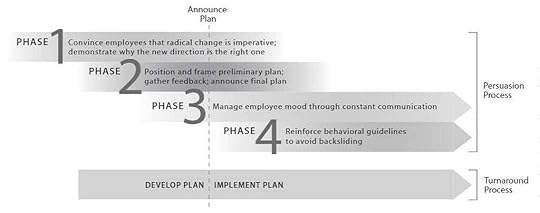
Dysfunctional Routines: Six Ways to Stop Change in Its Tracks
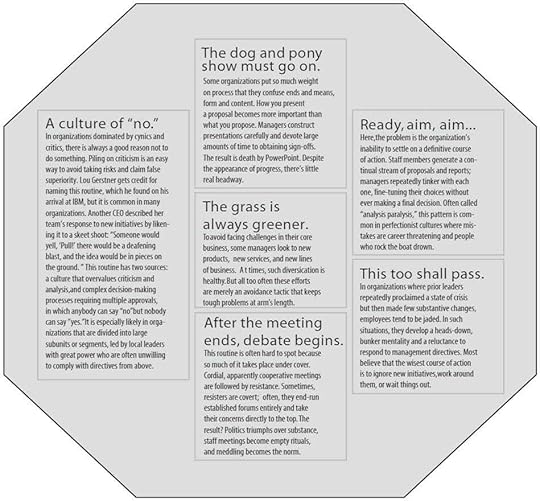 What You Don’t Know About Making Decisions
What You Don’t Know About Making DecisionsTwo Approaches to Decision Making
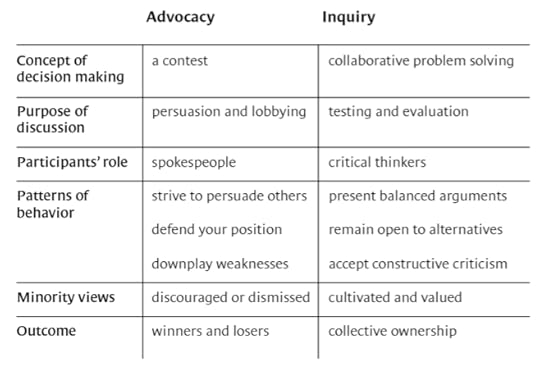
Structuring the Debate
 [image error]
[image error]
July 19, 2024
Knowledge Management Thought Leader 78: Carl Frappaolo
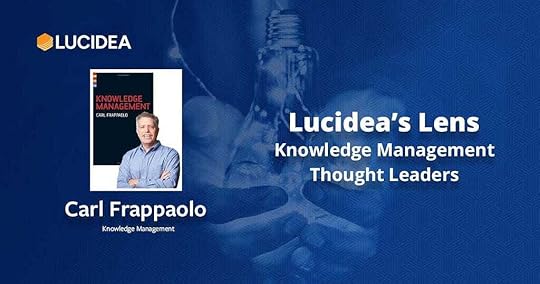
The late Carl Frappaolo (1956–2013) founded three companies including Delphi Group and Information Architected. As a consultant, he developed knowledge management strategies for many organizations around the world in both the public and private sector.
Carl’s last role was as Director of Knowledge Management at FSG Social Impact Consultants in Boston.
Carl was the creator of Delphi’s Knowledge Management Methodology (KM2), Portal Design and Development Methodology (PDDM), e-learning methodology (ELM), and Stair-Step design methodology. He sat on the board of the Electronic Document Systems Foundation. He was recognized by AIIM International (the Association for Information and Image Management) as a Master of Information Technology and as an Information Systems Laureate, and in 2000, was bestowed the Distinguished Service Award by AIIM.
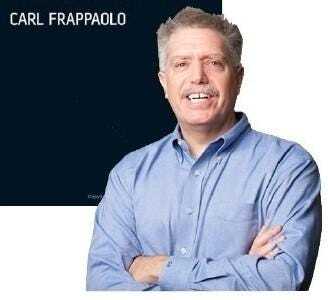
For more about Carl, see Profiles in Knowledge.
Books
 Take Knowledge Management with a Grain of Salt
Take Knowledge Management with a Grain of SaltThe purpose of knowledge management (KM) is to get people collaborating — to share and reuse know how and experience. Note that this does not place any demand on technology. Indeed, I often stress the best form of KM is talking to everyone who might know something about your focus du jour. The problem with this approach is, of course, scale and recall, and that is where technology provides value. The introduction of KM technologies can provide unlimited knowledge capture and asynchronous discovery. But technology is a double-edged sword, and this is where remembering to approach technology-empowered KM with a grain of salt is important.
Imagine the ability to execute searches on any topic, any issue, and on people’s backgrounds with near perfect total recall. Powerful — right? So where is the other edge of the sword? KM is a balancing act. Unrestricted abilities to capture and retrieve are very powerful. and addicting. Know when enough is enough. Asynchronous communication is a time saver, it’s scalable and powerful — but not to the exclusion of mentoring, discussing, and face-to-face group collaboration, and it should never go so far as to keep you from reaching a decision and taking action.
Collaborate Well or FailThere are three basic types of collaboration (interpersonal, content, and procedural), and 5 basic models or goals. The latter are depicted in the graphic below. They are shown in a pyramid for two reasons: the models closer to the base of the pyramid are more common (therefore broader in the illustration), and the models are inclusive; as you move up the pyramid the models often (not always) inherit the characteristics and needs of the models below them.
The point is that collaboration benefits from a deliberate model and strategy, that begins with assessing which of the basic models your effort requires. While it may be nice to think that collaboration is all about viral and organic growth, research and experience indicate that there is ample room for some control and management of the processes, as well as the knowledge and content captured in the process.
 Knowledge Management 2.0
Knowledge Management 2.0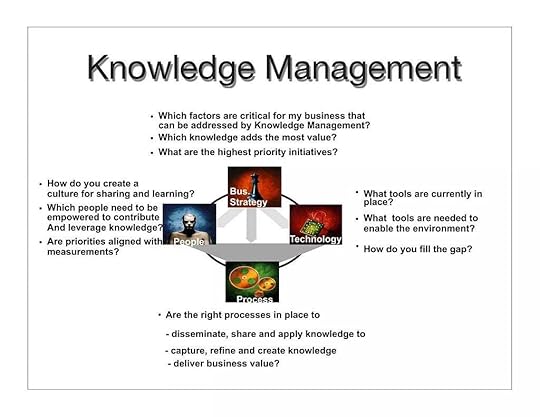 [image error]
[image error]
July 12, 2024
Knowledge Management Thought Leader 77: Leif Edvinsson
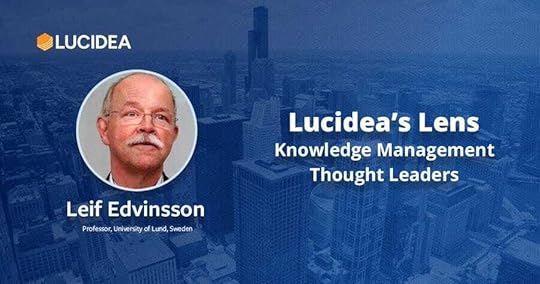
Leif Edvinsson is Professor Emeritus at Lund University in Sweden. He specializes in Intellectual Capital Management of Enterprises, Cities, and Nations; Innovations; and Future Centers.
Leif was the world’s first director of Intellectual Capital, at Skandia in the 1990s, and the world’s first professor of Intellectual Capital, at Lund University in the 2000s. He oversaw the creation of the world´s first corporate Intellectual Capital Annual Report.
His honors include Brain of the Year from Brain Trust (UK) in 1998 and KEN Practitioner of the Year from Entovation in 2004.
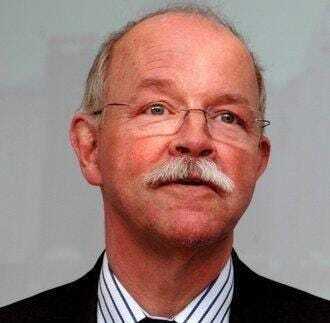
For more about Leif, see Profiles in Knowledge.
Books
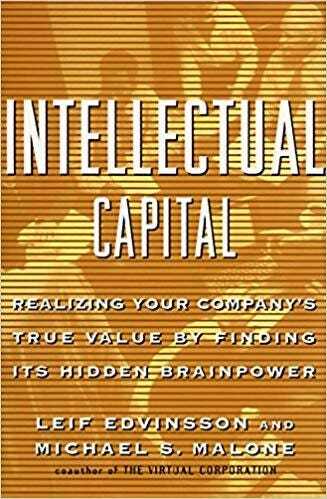
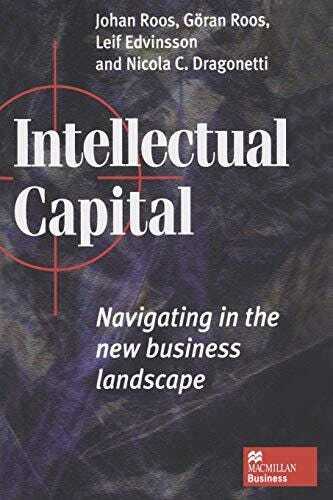

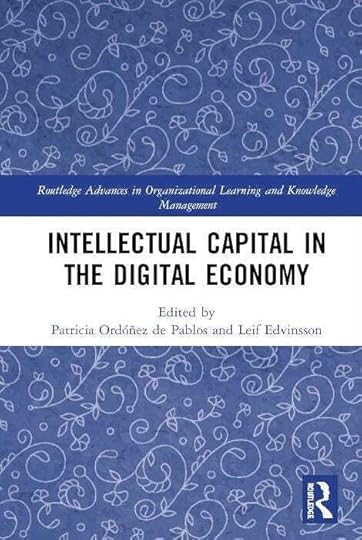

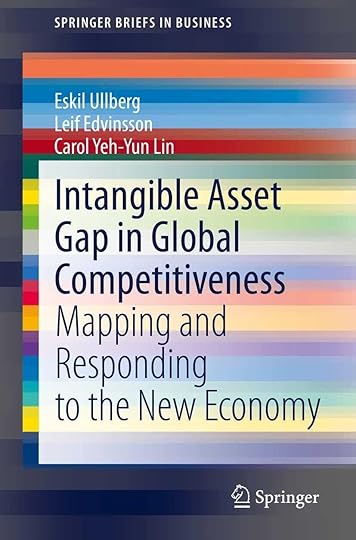 Perspectives on Intangibles and Intellectual Capital
Perspectives on Intangibles and Intellectual CapitalMarket capitalization value over time

Each phase often results in a stock market appreciation shift, based on increased transparency, as well as new expectations from the future value creation of the intangibles investment.
Phase one is about the visualization of intangibles from a reporting perspective. This is supplementary accounting.Phase two is focused on human capital injection, often labelled competence adding or knowledge management. It is both the search for talents to be added, e.g., by mergers between companies, and the effectiveness derived from knowledge sharing and installation of IT based knowledge systems, or emerging knowledge exchanges.The third phase is the systematic transformation of human capital into structural capital as a multiplier, with much more sustainable earnings potential for the organization. It is a refined approach based on the second phase, but very much focused on the packaging of knowledge into recipes to be shared globally and rapidly.The fourth phase is structural capital injection externally. It is a turbo effect on the IC multiplier by combining different types of structural capital constellations for co-creation of new opportunities. It is expanding the space of co-creation as the unique space of imagination, and organizational stretch where human capital and structural capital meet.These discernible phases of global IC growth are gradually increasing the value creation potential of organizations. The intangible or hidden values of the organizational competencies will be developed around fast learning, organizational networking and relationship building, as well as ethos and aesthetics for the brain, leading to more of a symbolic management and meaning of leadership.
Developing a Model for Managing Intellectual Capital with Patrick SullivanModel of the Knowledge Firm
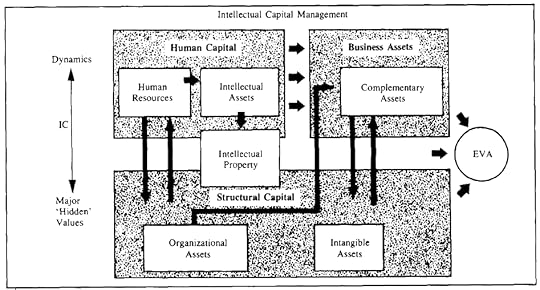
Glossary
Human Resource — Human capital is the organization’s human element. It includes owners, employees, contractors, suppliers, and all related humans who collectively bring to the firm their skills, know-how, and individual abilities. It represents the individual capabilities of the firm to solve problems. Human capital is one of the major elements of an organization’s intellectual capital.Intangible Assets — An accounting term defined as: non-physical benefits that contribute to future cash flows. (The benefit has already been obtained or is owned by an entity which controls the access of others to it.)Intellectual Assets — Intellectual assets are the codified, tangible or physical descriptions of specific knowledge to which the organization may assert ownership rights. Intellectual assets are one of the major elements of an organization’s intellectual capital.Intellectual Capital — Knowledge that can be converted to value.Intellectual Property — A legal term describing the intellectual assets for which legal protection has been obtained.Structural Capital — All that is left when the human resources go home, i.e. organizational capability. Structural Capital includes both tangible and intangible elements. Intangible elements are such things as the firm’s information technology, customer databases, business and industrial procedures, strategic plans, etc. Tangible elements of the firm’s structural capital include financial assets, facilities, and the range of assets that are valued on the company’s balance sheet.Longitude: Knowledge Navigation Beyond Borders — IC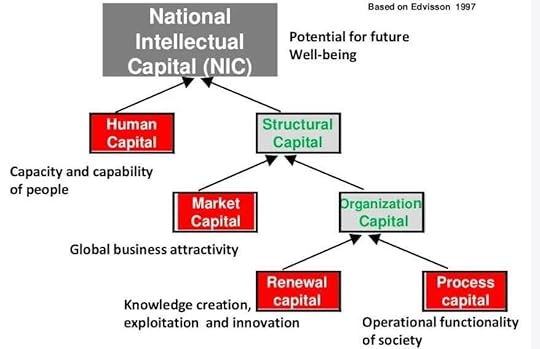 [image error]
[image error]
July 3, 2024
Kent Greenes: Profiles in Knowledge

This is the 105th article in the Profiles in Knowledge series featuring thought leaders in knowledge management. Kent Greenes helps teams, organizations and communities unleash the power of their collective learning and knowledge. He is recognized as one of the pioneers in the field of KM. His specialties are fast learning and performing, knowledge management, culture change, and transformation.
Kent worked in BP for 17 years where he initiated and directed the Virtual Teamwork Program. He joined SAIC as their CKO in 1999 and built a highly regarded KM consulting practice in the public and private sectors. He led their business transformation and introduced Six Sigma.
Kent started his own consulting practice in 2006. He leads The Conference Board’s Knowledge & Collaboration and Change & Transformation Councils of cross-industry leaders and is a Senior Fellow in their Human Capital Practice. Kent helped create the first MS Graduate program in KM at CSU Northridge and is currently on the KM Advisory board for the graduate program at Kent State University. He has been a part-time visiting instructor at the US Army War College in Carlisle and is on the editorial board of the Journal of Knowledge Management.
Kent’s experience and insights in KM have been documented in magazines and over twenty books, including: Surviving the Boomer Exodus, Beyond the Deal, Company Command: Unleashing the Power of the Army Profession; The Wealth of Knowledge: Intellectual Capital and the Twenty-first Century Organization, Performance Through Learning, Lost Knowledge, Simplicity, Learning to Fly, The Knowledge Engine and Knowledge Capital. He co-led the research working group on Knowledge Transfer in a Digital World: Using New Media Across Multiple Generations.
Kent and I have known each other for many years. We co-presented at KMWorld in 2012, he has presented three times on the SIKM Leaders Community monthly call, and we are both on the Kent State University KM Advisory Board.
Background EducationNorthwestern University — Certificate, Kellog Executive Program, 1992University of Arizona — M.S., Geophysics, 1978–1980Kent State University — B.S., Geoscience, 1973–1977ExperienceGreenes Consulting — Consultant, 2006 — PresentThe Conference BoardProgram Director Knowledge & Collaboration Council, 2006 — PresentProgram Director, Change & Transformation Council, 2012 — PresentResearch Program Director, 2011–2023CSU at Northridge — KM Master’s Degree Program Adjunct Faculty, 2007–2023SAIC — CKO, 1999–2006British Petroleum — Head of Knowledge Management, 1982–1999ProfilesGreenes ConsultingConference BoardKM Advisory Board — Kent State UniversityLinkedInTwitterFacebookContentLinkedIn PostsBriefsAI for Knowledge ManagementBoth Collective and Collaborative Learning Lead to New Levels of PerformanceReportsConnect, Converse, Create: How Companies Can Generate Value through Internal Social CollaborationIt’s Not Just Your Children’s Facebook AnymoreBridging the Gaps: How to Transfer Knowledge in Today’s Multigenerational WorkplaceGreenes ConsultingKnowledge Capture & RetentionHarvesting your most valuable resourceHow to GuidesKM Roadmap — a comprehensive map to guide an organization through their KM journey from assessment to strategy to implementationGuide to Peer Assists — a technique for learning and transferring knowledge before implementing a project or activityGuide to Mini-Peer Assists — a technique for quickly sharing relevant knowledge, good practices and lessons learned in a meeting or group eventGuide to Action Reviews — a fast technique for teams to learn in the moment, ‘while doing’Guide to Retrospects — a technique for team learning after an event, project or activity, in a useful format for sharing with othersGuide to Knowledge Communities and Communities of Practice — step-by-step approach to establishing and renewing collaborative networks10-Step Guide to Knowledge Capture — step-by -step approach & process for capturing knowledge from an individualKnowledge Capture 1-Pager — a simple template to document some knowledge, a good practice or lesson you’ve learned in one page!Guide to Knowledge Elicitation Interviews — a simple guide for gathering experience, lessons and good practices from individualsTrends in KM BlogSocial Learning — Is there really any other way?Personal Learning and PerformingKnowledge Leadership… Transform your organization’s performance with 2 simple questionsSuccess StoriesOverviewAerospaceConsumer ProductsEnergy & UtilitiesGenerational Knowledge TransferHealth CareHuman CapitalMilitary & IntelligenceProfessional ServicesTraining & CoachingArticlesAcademia.eduPeer Assist: Learning Before DoingThe Future of the Future: Learning fast to stay relevant in a flat worldThe undiscovered country with Art MurrayThe Future of the Future: Building the enterprise of the future: a framework for transformation with Art MurrayThe enterprise of the future with Art MurrayThe Future of the Future: Future competencies to weather the storm with Greg BakerPractical Steps for Transferring KnowledgeAgile Knowledge Management (KMAgile) with Bill KaplanFull DocumentKMWorld ArticleArticles by OthersPerformance through learning: interview with Kent A. Greenes by Michael StankoskyLearning fast to stay relevant by Jack VinsonTelling Tales at BP Amoco by Tom StewartKaye Vivian: Profiles in Knowledge
EducationNorthwestern University — Certificate, Kellog Executive Program, 1992University of Arizona — M.S., Geophysics, 1978–1980Kent State University — B.S., Geoscience, 1973–1977ExperienceGreenes Consulting — Consultant, 2006 — PresentThe Conference BoardProgram Director Knowledge & Collaboration Council, 2006 — PresentProgram Director, Change & Transformation Council, 2012 — PresentResearch Program Director, 2011–2023CSU at Northridge — KM Master’s Degree Program Adjunct Faculty, 2007–2023SAIC — CKO, 1999–2006British Petroleum — Head of Knowledge Management, 1982–1999ProfilesGreenes ConsultingConference BoardKM Advisory Board — Kent State UniversityLinkedInTwitterFacebookContentLinkedIn PostsBriefsAI for Knowledge ManagementBoth Collective and Collaborative Learning Lead to New Levels of PerformanceReportsConnect, Converse, Create: How Companies Can Generate Value through Internal Social CollaborationIt’s Not Just Your Children’s Facebook AnymoreBridging the Gaps: How to Transfer Knowledge in Today’s Multigenerational WorkplaceGreenes ConsultingKnowledge Capture & RetentionHarvesting your most valuable resourceHow to GuidesKM Roadmap — a comprehensive map to guide an organization through their KM journey from assessment to strategy to implementationGuide to Peer Assists — a technique for learning and transferring knowledge before implementing a project or activityGuide to Mini-Peer Assists — a technique for quickly sharing relevant knowledge, good practices and lessons learned in a meeting or group eventGuide to Action Reviews — a fast technique for teams to learn in the moment, ‘while doing’Guide to Retrospects — a technique for team learning after an event, project or activity, in a useful format for sharing with othersGuide to Knowledge Communities and Communities of Practice — step-by-step approach to establishing and renewing collaborative networks10-Step Guide to Knowledge Capture — step-by -step approach & process for capturing knowledge from an individualKnowledge Capture 1-Pager — a simple template to document some knowledge, a good practice or lesson you’ve learned in one page!Guide to Knowledge Elicitation Interviews — a simple guide for gathering experience, lessons and good practices from individualsTrends in KM BlogSocial Learning — Is there really any other way?Personal Learning and PerformingKnowledge Leadership… Transform your organization’s performance with 2 simple questionsSuccess StoriesOverviewAerospaceConsumer ProductsEnergy & UtilitiesGenerational Knowledge TransferHealth CareHuman CapitalMilitary & IntelligenceProfessional ServicesTraining & CoachingArticlesAcademia.eduPeer Assist: Learning Before DoingThe Future of the Future: Learning fast to stay relevant in a flat worldThe undiscovered country with Art MurrayThe Future of the Future: Building the enterprise of the future: a framework for transformation with Art MurrayThe enterprise of the future with Art MurrayThe Future of the Future: Future competencies to weather the storm with Greg BakerPractical Steps for Transferring KnowledgeAgile Knowledge Management (KMAgile) with Bill KaplanFull DocumentKMWorld ArticleArticles by OthersPerformance through learning: interview with Kent A. Greenes by Michael StankoskyLearning fast to stay relevant by Jack VinsonTelling Tales at BP Amoco by Tom StewartKaye Vivian: Profiles in KnowledgeData becomes information when it’s organized; information becomes knowledge when it is placed in actionable context. Without context, there is little value. — Kent GreenesKnowledge Management Visions
One learns and everyone knows. Individuals, groups, and organizations share, transfer and apply their collective knowledge and experience to do what’s right AND deliver extraordinary performance.
What good KM looks like:
Reflective practitioners and leaders: self-guided learners, seekers and sharers of knowledge are sought after and highly rewarded. Everyone is highly participative in knowledge networks and communities.Work is learning and learning is work: knowledge is embedded in processes and practices, and it’s all transparent.People are highly aware of their digital presence: it’s easy and fast to find and collaborate with relevant people and content.Stakeholders are aligned with common intent: People, Process, and IT.CommunitySIKM Leaders Community PostsPresentationsKnowledge Leadership- keynote speech for the 6th annual U.S. Army Knowledge Management Conference, October 20, 2010 — Kansas City, KansasBridging the Gaps in Generational Knowledge Transfer — seminar for the Alberta Government Leadership in Learning Series, Edmonton, June 4, 2010KM Challenges & Emerging Solutions for Complex Business — keynote presentation, KM Brasil, 2009SIKM Leaders Community2006–05 Making learning & performing routine — Slides 2008–01 Facilitated Better Practice Transfer — Slides
2008–01 Facilitated Better Practice Transfer — Slides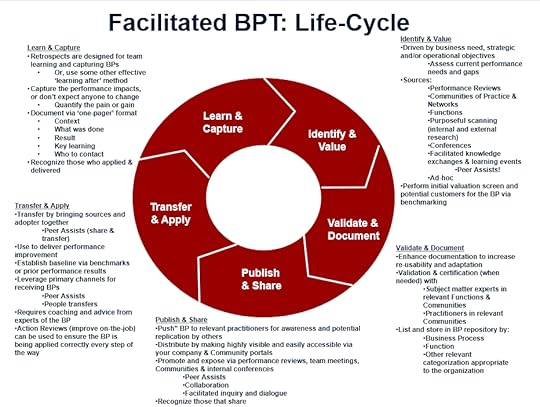 2011–09 Knowledge Transfer in a Digital World — The shift is on! — Slides
2011–09 Knowledge Transfer in a Digital World — The shift is on! — SlidesSocial Learning@Speed_Greenes_KMWorld 2012
 KMWorld2015 W3: Applying ‘Agile’ in Developing KM Strategies & Implementing Frameworks2012C101: What’s Your KM Vision? — SlidesC202: Social Learning @ Speed of Need — Slides2011 B101: Knowledge Leadership — Slides2006 W11: Learning Fast to Stay RelevantVideosGlobal Intelligence and Performance Competence: The New Tools for Growth (Part 1)https://medium.com/media/6d6a7fa1511e40868f100d6973e6b86b/hrefGlobal Intelligence and Performance Competence: The New Tools for Growth (Part 2)https://medium.com/media/b450f364ae7275ed56498f97328d17a2/hrefGlobal Intelligence and Performance Competence: The New Tools for Growth (Part 4)https://medium.com/media/6f19af14917ca555f714dd1799e2fe64/hrefBook Chapter
KMWorld2015 W3: Applying ‘Agile’ in Developing KM Strategies & Implementing Frameworks2012C101: What’s Your KM Vision? — SlidesC202: Social Learning @ Speed of Need — Slides2011 B101: Knowledge Leadership — Slides2006 W11: Learning Fast to Stay RelevantVideosGlobal Intelligence and Performance Competence: The New Tools for Growth (Part 1)https://medium.com/media/6d6a7fa1511e40868f100d6973e6b86b/hrefGlobal Intelligence and Performance Competence: The New Tools for Growth (Part 2)https://medium.com/media/b450f364ae7275ed56498f97328d17a2/hrefGlobal Intelligence and Performance Competence: The New Tools for Growth (Part 4)https://medium.com/media/6f19af14917ca555f714dd1799e2fe64/hrefBook ChapterKnowledge Capital: How Knowledge-Based Enterprises Really Get Built by Jay Chatzkel — Chapter 15: Knowledge Management Is about Change
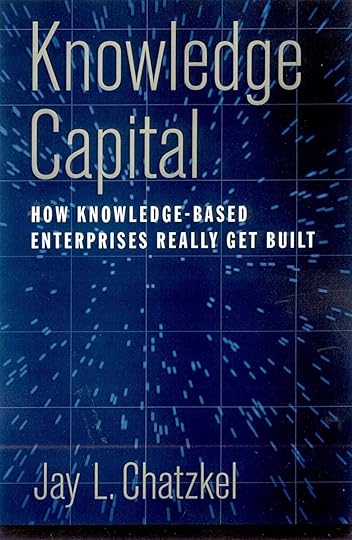 [image error]
[image error]
June 28, 2024
Knowledge Management Thought Leader 76: Seth Earley
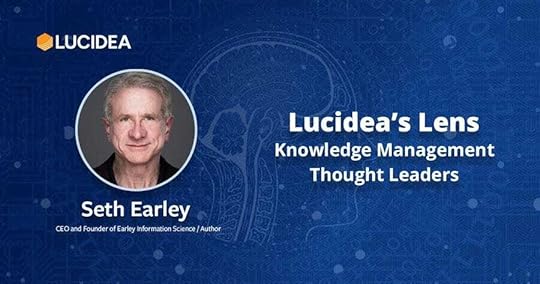
Seth Earley is the CEO and Founder of Earley Information Science, a professional services firm with methodologies designed to address product data, content assets, customer data, and corporate knowledge bases. His firm’s information architecture expertise helps clients to efficiently organize, access, and utilize their data.
Seth specializes in artificial intelligence, information architecture, knowledge management, customer experience, and user experience. His current work covers cognitive computing, knowledge engineering, data management systems, taxonomy, ontology, and metadata governance strategies.
Seth is on the editorial board of Applied Marketing Analytics. He was the former editor of IT Professional Magazine from the IEEE, where he wrote a regular column on data analytics and information access issues and trends. He was the founder of TaxoCoP, a community of practice for taxonomy, and is co-owner of the Taxonomy and Ontology Community of Practice LinkedIn Group.

For more about Seth, see Profiles in Knowledge.
Book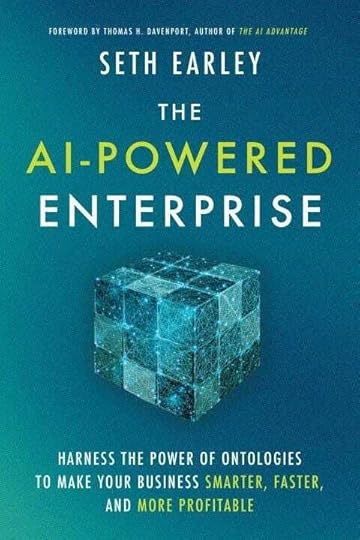 The AI Powered Enterprise: Knowledge Engineering and Generative AI
The AI Powered Enterprise: Knowledge Engineering and Generative AI The Key to Context: Prompt Engineering and Knowledge Engineering
The Key to Context: Prompt Engineering and Knowledge Engineering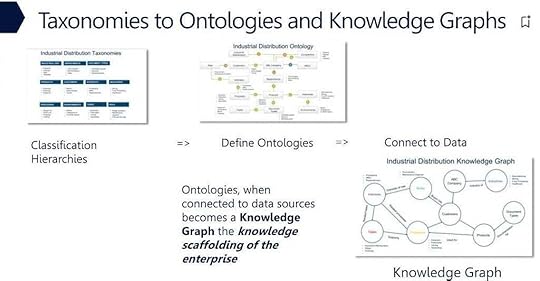 There Is No AI Without IA
There Is No AI Without IA [image error]
[image error]
June 21, 2024
Knowledge Management Thought Leader 75: Graham Durant-Law
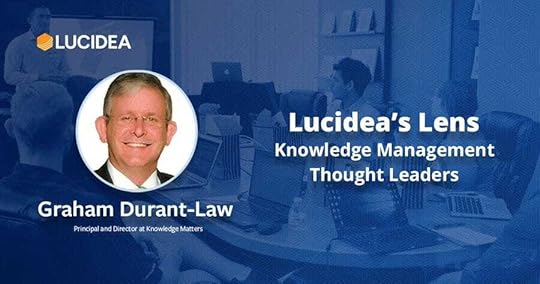
Graham Durant-Law was the principal and director of a boutique consulting company called Knowledge Matters, which specialized in Business Network Analysis (BNA) and knowledge management solutions.
He earned his doctorate at the University of Canberra researching “Mapping Social Connectivity and Artefact Relationships to Improve Knowledge Productivity.” His work included:
A business network analysis of an organization that had a portfolio of projects valued more than 40 billion Australian dollars. This analysis revealed hitherto unknown relationships, enabling senior management to make decisions that are more informed.The design and support to a knowledge management system, colloquially known as TARDIS, for Capability Development Group of the Australian Defense Force
For more about Graham, see Profiles in Knowledge.
Book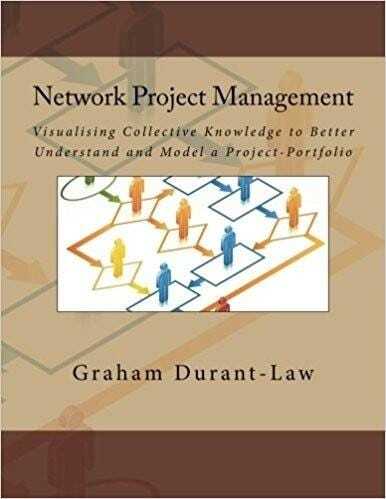 Introducing Network Analysis as a Research Technique
Introducing Network Analysis as a Research Technique Specifying a Knowledge Management System
Specifying a Knowledge Management System The Six Knows Knowledge Model‘Know what’ knowledge is the knowledge about how to find the relevant data to produce information. It is not about the data or information itself. This knowledge is increasing in importance simply because of the sheer volume of data that is now available to a corporation. For a knowledge manager the ‘know what’ dimension represents a real challenge, because discovering where knowledge resides, internal to and external to the enterprise, is crucial to success.‘Know how’ knowledge is skills based and generally, but not exclusively, personal in nature. ‘Know how’ knowledge is expert insight that allows an individual to interpret and give meaning to emerging complexity and is often used to predict outcomes. It plays a key role in all enterprise activities. ‘Know how’ knowledge is also found in teams, and is represented in the shared routines, social relationships, and lexicons. Without ‘know how’ knowledge teams cannot operate effectively. The challenge for the knowledge manager is to capture ‘know how’ knowledge as it is generally not codified and most often is tacit.‘Know why’ knowledge is both explicit and tacit and involves the ability to understand and explain natural and social phenomena. It is explanatory and deals with principles.‘Know who’ knowledge is a form of individual and social knowledge that is largely tacit. It involves information about the gatekeepers to ‘know what’, the owners of ‘know how’ knowledge, and the possessors of ‘know why’ knowledge.‘Know who’ knowledge also deals with the ability to cooperate effectively with different types of people and experts and is a fundamental precondition for the learning organization. It is learnt in both formal and informal social practice, in specialized education environments, and with day-to-day dealings with colleagues, customers, and competitors. It follows therefore that for a knowledge management initiative to succeed it is essential that ‘know who’ knowledge is tapped.‘Know where’ and ‘know when’ knowledge is economically useful knowledge about markets. It is knowledge that provides an economic advantage. For example, (the apocryphal story that) Wal-Mart discovered a relationship between the sale of beer and diapers. They also found on further examination the correlation was greater on a Friday evening. Wal-Mart increased sales by collocating the items near check-out counters on Fridays. This represents both ‘know where’ and ‘know when’ knowledge. The ‘know where’ part is the collocation of the items. The ‘know when’ part is Friday evenings.
The Six Knows Knowledge Model‘Know what’ knowledge is the knowledge about how to find the relevant data to produce information. It is not about the data or information itself. This knowledge is increasing in importance simply because of the sheer volume of data that is now available to a corporation. For a knowledge manager the ‘know what’ dimension represents a real challenge, because discovering where knowledge resides, internal to and external to the enterprise, is crucial to success.‘Know how’ knowledge is skills based and generally, but not exclusively, personal in nature. ‘Know how’ knowledge is expert insight that allows an individual to interpret and give meaning to emerging complexity and is often used to predict outcomes. It plays a key role in all enterprise activities. ‘Know how’ knowledge is also found in teams, and is represented in the shared routines, social relationships, and lexicons. Without ‘know how’ knowledge teams cannot operate effectively. The challenge for the knowledge manager is to capture ‘know how’ knowledge as it is generally not codified and most often is tacit.‘Know why’ knowledge is both explicit and tacit and involves the ability to understand and explain natural and social phenomena. It is explanatory and deals with principles.‘Know who’ knowledge is a form of individual and social knowledge that is largely tacit. It involves information about the gatekeepers to ‘know what’, the owners of ‘know how’ knowledge, and the possessors of ‘know why’ knowledge.‘Know who’ knowledge also deals with the ability to cooperate effectively with different types of people and experts and is a fundamental precondition for the learning organization. It is learnt in both formal and informal social practice, in specialized education environments, and with day-to-day dealings with colleagues, customers, and competitors. It follows therefore that for a knowledge management initiative to succeed it is essential that ‘know who’ knowledge is tapped.‘Know where’ and ‘know when’ knowledge is economically useful knowledge about markets. It is knowledge that provides an economic advantage. For example, (the apocryphal story that) Wal-Mart discovered a relationship between the sale of beer and diapers. They also found on further examination the correlation was greater on a Friday evening. Wal-Mart increased sales by collocating the items near check-out counters on Fridays. This represents both ‘know where’ and ‘know when’ knowledge. The ‘know where’ part is the collocation of the items. The ‘know when’ part is Friday evenings.I would add ‘know how much’ as another type.
[image error]June 14, 2024
Knowledge Management Thought Leader 74: Steve Denning

Steve Denning is a consultant, speaker, and author on leadership, storytelling, and management. He has written over 900 articles on strategy and leadership as a senior contributor for Forbes.
Steve is the former Program Director, Knowledge Management at the World Bank, where he spearheaded a major strategic shift. He now works with organizations on leadership, innovation, business agility and organizational storytelling.
Steve is a director of the SD Learning Consortium, a group of private sector firms that are committed to transforming the world of work. Steve has written over 40 articles for the management journal, Strategy & Leadership.

For more about Steve, see Profiles in Knowledge.
Selected Books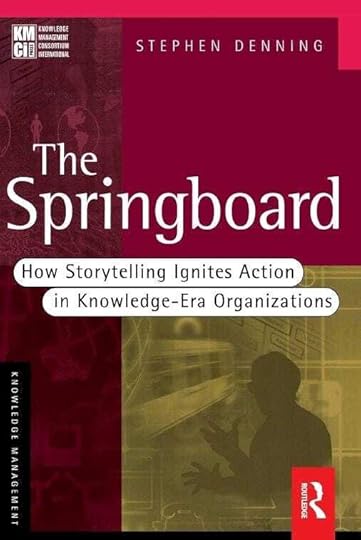
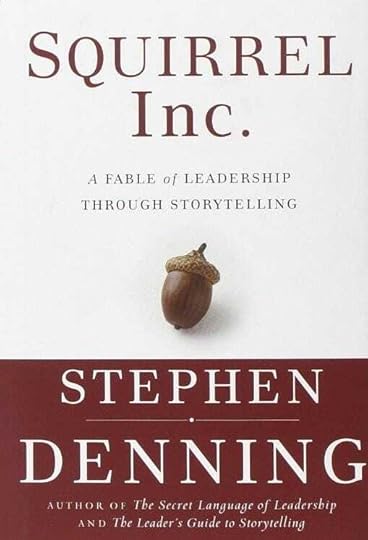
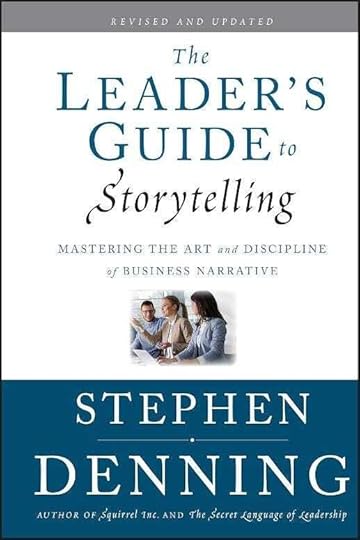
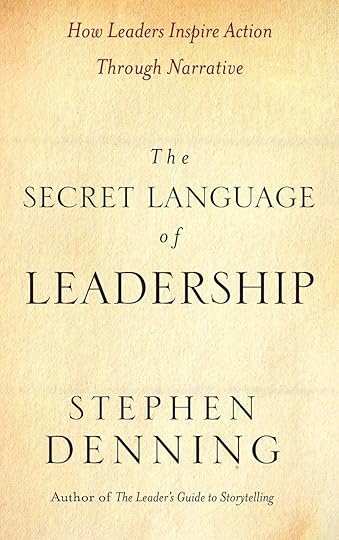
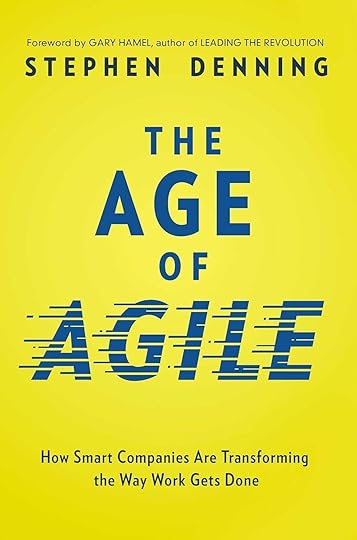 Four Knowledge Management Lists
Four Knowledge Management ListsThirteen Key Elements Knowledge Management
Communities of PracticePlace (online presence)Help DeskYellow Pages (expertise location)Primer (FAQ)Knowledge ArtifactsBulletin Board (threaded discussions)Doorway (external access)Demand (enhance using narrative)Imagination (for transformational innovation)Risk ManagementValues (conducive to sharing)Social Media (blogs, wikis, RSS feeds, etc.)Seventeen Myths of Knowledge Management
Knowledge is always a plusKnowledge always helps innovationKnowledge is stickyThe concept of knowledge is infinitely extendableKnowledge can be transferredKnowledge-sharing is always a good thingKnowledge is more important than valuesPeople always want to have better knowledgeThe task of KM is to enhance the supply of knowledgeThere are structural solutions to the lack of demand for knowledgeKM is the same for all organizationsKnowledge is the only sustainable competitive advantageKnowledge management will transform the business landscapeKM succeeded and no one knows itIt was the IT vendors who killed KMThe right question to ask is: how do you make knowledge-based organizations?Knowledge is the raison d’être for organizations and explains competitive advantageTen steps to get more business value from knowledge management
Slice through the hypeFight off the IT firmsTake a hard look at your own organizationSet your knowledge management strategyUse narrative techniques to communicate your KM strategyPay special attention to organizational valuesEncourage communities and cross-communitiesSet your incentives (carefully!)Measure progress (carefully!)Recognize the limits of knowledgeSeven laws of knowledge management
Knowledge sharing is essential to economic survivalCommunities of practice are the heart and soul of knowledge sharingVirtual community members also need physical interactionsPassion is the driving force behind communities of practiceCommunities enrich organizations and personal livesKnowledge sharing has inside-out and outside-in dynamicStorytelling ignites knowledge sharingThree corollaries
Knowledge sharing is at some point confused with ITMiddle-management resistsVibrant communities of practice attract new talentsSupport for Change: Storytelling as a Springboard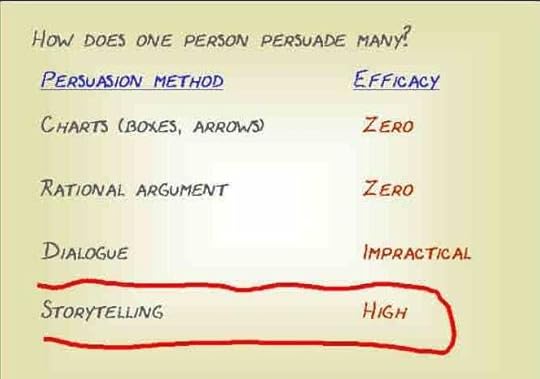


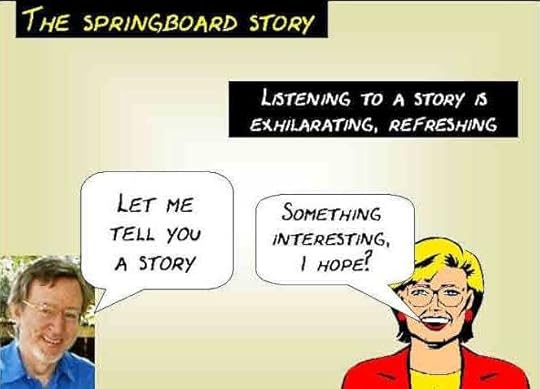
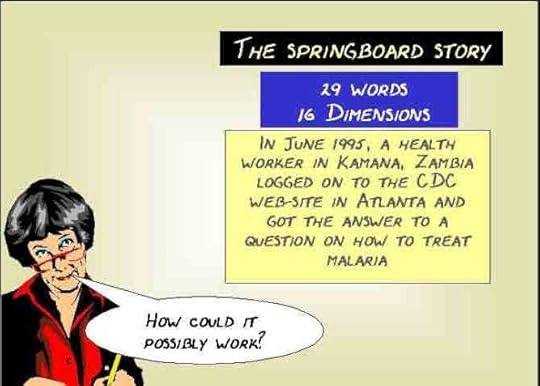 Radical Management: Creating a Safe Space for KM
Radical Management: Creating a Safe Space for KM
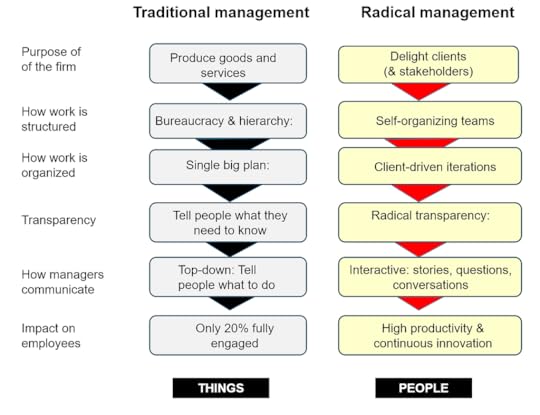 [image error]
[image error]
June 7, 2024
Knowledge Management Thought Leader 73: Ross Dawson
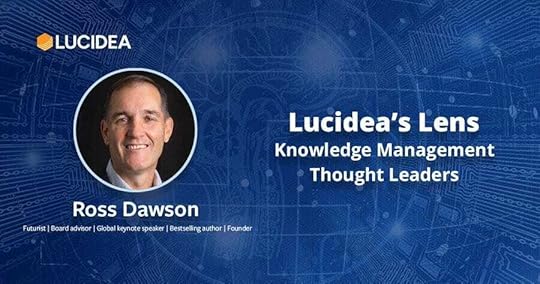
Ross Dawson is a leading futurist, speaker, strategy advisor, author, and entrepreneur. He is Founder & CEO of Informivity and Chairman of Advanced Human Technologies Group based in Bondi, New South Wales, Australia.
Ross has expertise in future thinking and long-term strategy, entrepreneurship, scenario planning, network economy, corporate innovation, parallel entrepreneurship, crowdsourcing, social media, high-value relationships, influence networks, Social Network Analysis, shared value creation, and concept visualization.

For more about Ross, see Profiles in Knowledge.
Books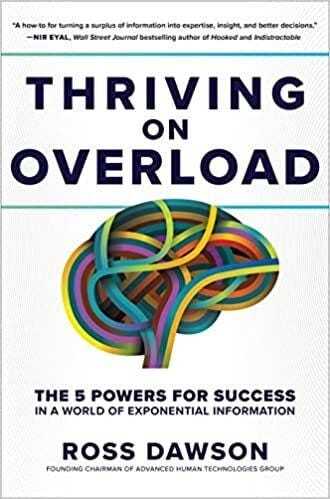
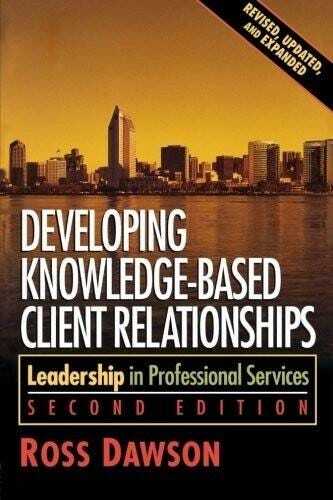
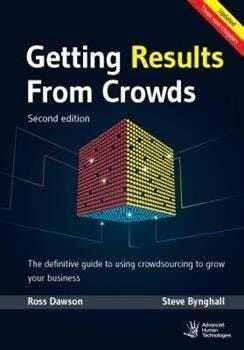
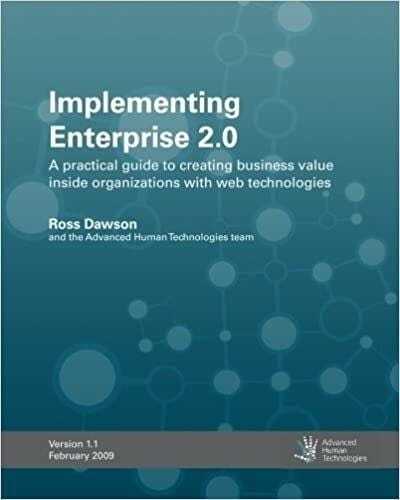
 Humans in the Future of Work
Humans in the Future of Work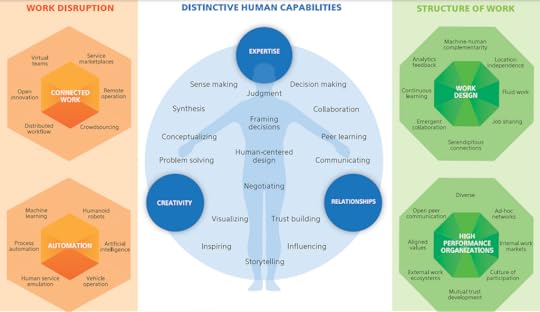 Eight steps to thriving on information overloadSet information objectives.Select your information sources.Set time aside for reading.Filter aggressively.Be open to useful information.People are your best resource.Develop your reading and note-taking skills.Sleep on it!Human + AI Resources
Eight steps to thriving on information overloadSet information objectives.Select your information sources.Set time aside for reading.Filter aggressively.Be open to useful information.People are your best resource.Develop your reading and note-taking skills.Sleep on it!Human + AI ResourcesA set of resources to help you and your organization amplify productivity and create a better future by integrating the unique capabilities of humans and AI.
Frameworks
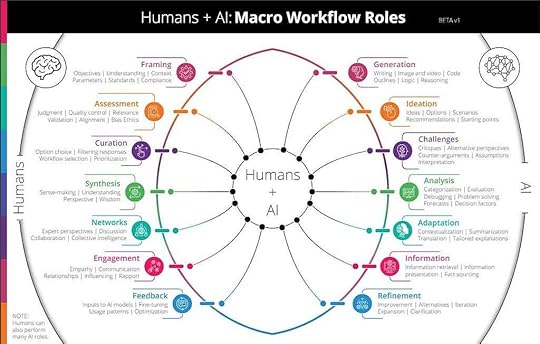
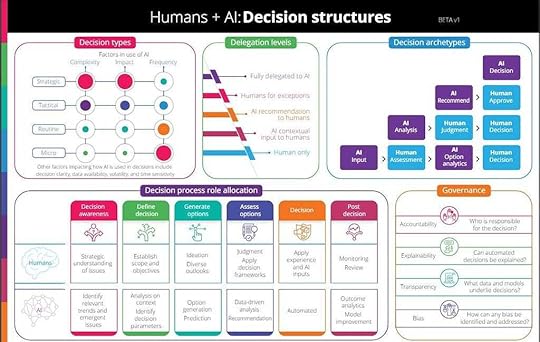
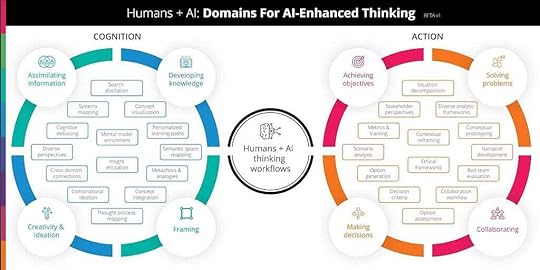 [image error]
[image error]
June 5, 2024
Mary Adams: Profiles in Knowledge

This is the 104th article in the Profiles in Knowledge series featuring thought leaders in knowledge management. Mary Adams helps business leaders deliver sustainable corporate value through ESG (environmental, social, and governance) optimization. Based in Boston, she specializes in intangible capital, the multi-capital model, integrated thinking, and integrated management.
The focus of her work is bringing sustainability and long-term thinking into business decisions. Mary’s career started in high-risk finance and moved to entrepreneurship and strategy consulting. Her current work at Insights7 is building software that enables business leaders to literally connect the dots between profitability and sustainability. The rising pressure on companies to incorporate ESG factors into corporate reporting and management systems is an important impetus.
Mary supports two communities she helped create: The Exit Planning Exchange (XPX) that brings long-term thinking to the private company market, and the Integrated Reporting U.S. Community that brings long-term thinking to public companies. Her career started in the world of hard assets and finance, with 15 years in high-risk lending at Citicorp and Sanwa. In 1999, Mary started a strategy consulting firm. As she helped clients adapt to changing markets and changing expectations, she saw firsthand how the financial models she had used as a banker were failing to capture the value being created (and destroyed) in the form of human, digital, natural, and relationship resources.
Mary is the co-author of Intangible Capital: Putting Knowledge to Work in the 21st Century Organization which outlined approaches she developed to support systems thinking, integrated value creation, and a multi-capital framework. This kind of approach is now gaining greater market acceptance thanks to the work of organizations like the integrated reporting and management movement under the umbrella of ISSB — the International Sustainability Standards Board, a movement she actively supports.
Background EducationRice University — BA, Political Science, 1977–1981Thunderbird School of Global Management — Masters, International Management, 1981–1982ExperienceCo-founder and CMO — Insights7, 2021 — PresentFounder — Smarter-Companies, 2013–2022Co-Founder — Trek Consulting LLC, 1999–2013Vice President — Sanwa Business Credit, 1990–1999ProfilesLinkedInSmarter CompaniesTwitterFacebookLucidea’s LensContentInsights7Smarter CompaniesLinkedIn ArticlesLinkedIn PostsBlogs
EducationRice University — BA, Political Science, 1977–1981Thunderbird School of Global Management — Masters, International Management, 1981–1982ExperienceCo-founder and CMO — Insights7, 2021 — PresentFounder — Smarter-Companies, 2013–2022Co-Founder — Trek Consulting LLC, 1999–2013Vice President — Sanwa Business Credit, 1990–1999ProfilesLinkedInSmarter CompaniesTwitterFacebookLucidea’s LensContentInsights7Smarter CompaniesLinkedIn ArticlesLinkedIn PostsBlogs1. Insights7
Moving the Needle on Sustainable Value CreationDo you speak value?The Multi-Capital Model in ActionSustainable Value Creation: Three Key Perspectives in ActionModeling a Sustainable Value Chain How Intangible Capital Saves Bookshops
How Intangible Capital Saves BookshopsThree key strategies that helped drive the change (and the intangible capitals behind them):
Community — strong focus on local connections (relationship capital)Curation — emphasis on the value add of the staff choices and recommendations (human capital)Convening — building the capacity to promote and run events to bring together like-minded customers (structural capital)A New Way of Looking at Intangible Capital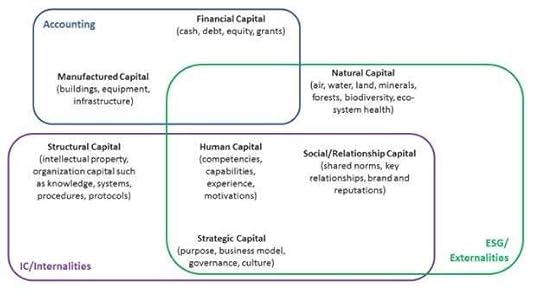 ArticlesThe Learning Journey of IC Missionaries: Intuition, control, and value creation with John Dumay
ArticlesThe Learning Journey of IC Missionaries: Intuition, control, and value creation with John Dumay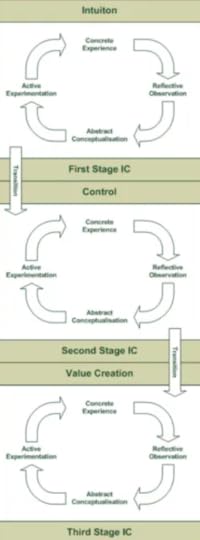 Optimized for Growth: Case Study of a Sales Organization with Verna Allee
Optimized for Growth: Case Study of a Sales Organization with Verna Allee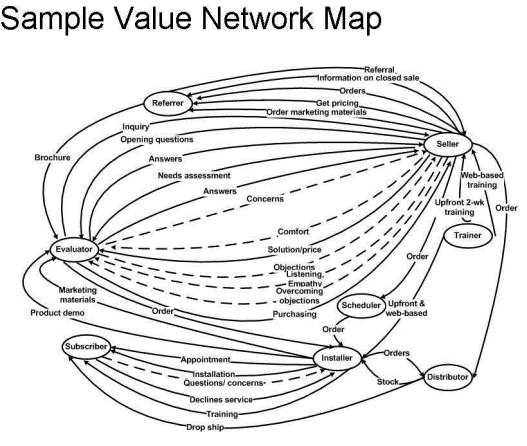 Cultivating Innovation: Lessons from America’s Chief Innovation Officers
Cultivating Innovation: Lessons from America’s Chief Innovation Officers PresentationsIT + IC = InnovationRisk in the Knowledge Era: Intangible. But Very Real
PresentationsIT + IC = InnovationRisk in the Knowledge Era: Intangible. But Very RealRisk in the Knowledge Era: Intangible. But Very Real
Knowledge is the New OilAccounting in the Knowledge EraAccounting in the Knowledge Era
PodcastsHow to Increase Value with Intangible CapitalIntegrated Reporting 101 — A Lesson in Intangible Value and Its Relationship to ESGConnecting the Dots: ESG, Corporate Brand, and Long-Term ValueVideosYouTubeInterviewhttps://medium.com/media/159fac3f13fd30382593951bb715c12d/hrefSmarter Companieshttps://medium.com/media/5526261fdbce8079b8f2061a52925a39/hrefMulti-Capital Modelhttps://medium.com/media/bec10a407868c8209eeae2ffd673cd15/hrefBooksIntangible Capital: Putting Knowledge to Work in the 21st-Century Organization with Michael Oleksak
Table of Contents
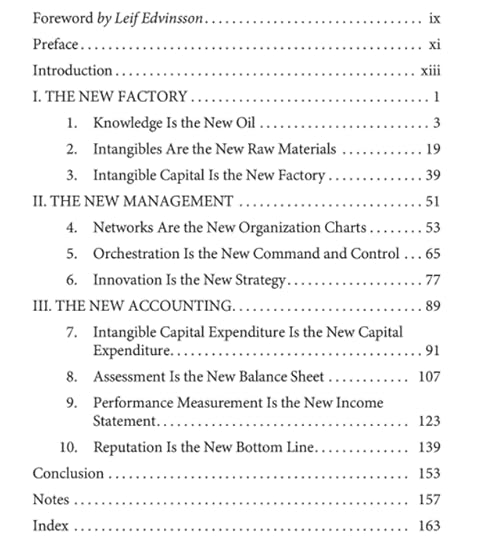 The Routledge Companion to Intellectual Capital edited by James Guthrie, John Dumay, Federica Ricceri, and Christian Nielsen — Chapter 23: Emerging Integrated Reporting Practices in the United States
The Routledge Companion to Intellectual Capital edited by James Guthrie, John Dumay, Federica Ricceri, and Christian Nielsen — Chapter 23: Emerging Integrated Reporting Practices in the United States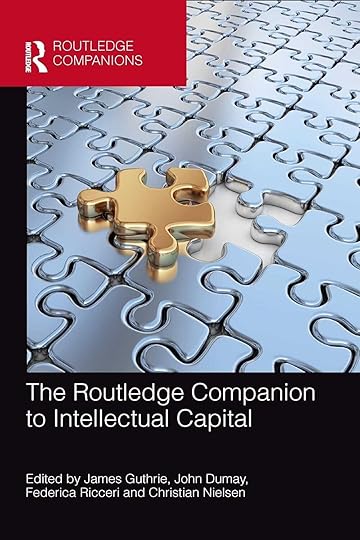 Leading Issues in Knowledge Management Volume 2 edited by Kenneth Grant and John Dumay — Chapter 2 with John Dumay: The Learning Journey of IC Missionaries: Intuition, control, and value Creation
Leading Issues in Knowledge Management Volume 2 edited by Kenneth Grant and John Dumay — Chapter 2 with John Dumay: The Learning Journey of IC Missionaries: Intuition, control, and value Creation Knowledge Management and Intellectual Capital Excellence Awards 2015: An Anthology of Case Histories edited by Dan Remeny — Chapter 1: Road Map to Growth and Exit: Jumpstarting Growth with IC
Knowledge Management and Intellectual Capital Excellence Awards 2015: An Anthology of Case Histories edited by Dan Remeny — Chapter 1: Road Map to Growth and Exit: Jumpstarting Growth with IC Flat World Navigation: Collaboration and Networking in the Global Digital Economy by Kim Chandler McDonald — Chapter 3: Demand and opportunity through business collaboration (interview)
Flat World Navigation: Collaboration and Networking in the Global Digital Economy by Kim Chandler McDonald — Chapter 3: Demand and opportunity through business collaboration (interview) [image error]
[image error]



